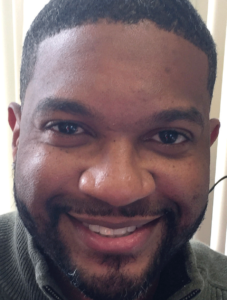By Samantha Higgins
The Scene staff
A student protest over racial inequality at University of Missouri Columbia has reinforced a Forest Park history professor’s belief that black studies courses are important.

Dorian Brown, who is black, feels traditional history courses trivialize and misrepresent the black experience, leading to widespread misunderstanding.
“That is something that is commonplace around the country,” he said.
St. Louis Community College offers black studies courses on the Forest Park and Florissant Valley campuses, but not at Meramec or Wildwood.
Forest Park is offering nine sections of four black studies courses next spring, according to the interactive class schedule on the college’s website. But at current registration levels, five sections would be canceled.
Florissant Valley is offering four sections of one black studies course next spring. At current registration levels, two sections would be cancelled.
“Faculty on other campuses don’t find some classes (worthwhile) due to attendance,” Brown said.
Mizzou’s president resigned last month, meeting one of eight demands of student protesters, who had persuaded the football team to stop practicing and playing until those demands were met.
The protesters were unhappy with the president’s handling of complaints against “systematic racism.”
“The black experience on Mizzou’s campus is cornered in offices and rarely attended to until it reaches media,” according to an introduction to the list of demands. “Then, and only then, do campus administrators seek reactionary initiatives to attest to the realities of oppressed students, faculty, and staff.
“These temporary adjustments to the university’s behaviors are not enough to assure that future generations of marginalized students will have a safe and inclusive learning experience during their time at Mizzou.”
Other demands included increasing the percentage of faculty and staff of color to 10 percent, hiring more mental-health professionals of color and creating a curriculum that promotes racial awareness and inclusion.
Protesters disrupted the Mizzou homecoming parade, slept in a tent city, organized sit-ins and otherwise demonstrated on campus. One of their leaders went on a hunger strike.
“I think that what the students at Mizzou did was admirable,” Brown said. “As someone who went to a Big 10 school, I understood totally the experiences that were important to them. I experienced the same thing.”
In an informal poll, many Forest Park students were unaware of what happened at Mizzou, despite the fact that it was national news for more than a week.
Black student Zakia Jones and Hispanic student Carla Quiroz were among those who had heard about the Mizzou controversy and understood the actions of protesters.
“I don’t see racism (at Forest Park), but I would react the same way,” said Jones, 18, a culinary arts major.
Quiroz, 20, a dental hygiene major, also hasn’t noticed racism at Forest Park. “We treat each other equally,” she said.
Christian Hargas, a black Meramec student and sports editor for the Meramec Montage, wrote a column during the Mizzou protests, criticizing Black Lives Matter, a national movement fighting oppression of minorities, specifically blacks.
Hargas questioned whether racism exists, not only on St. Louis Community College campuses, but anywhere in the United States.
“The point of the movement is to spread the message to American citizens that black lives matter and they should be treated equally and fairly,” he wrote. “The problem with this message is that there has not been a point in time since the late 1960s where blacks were not treated equally as a majority race in this nation.”
